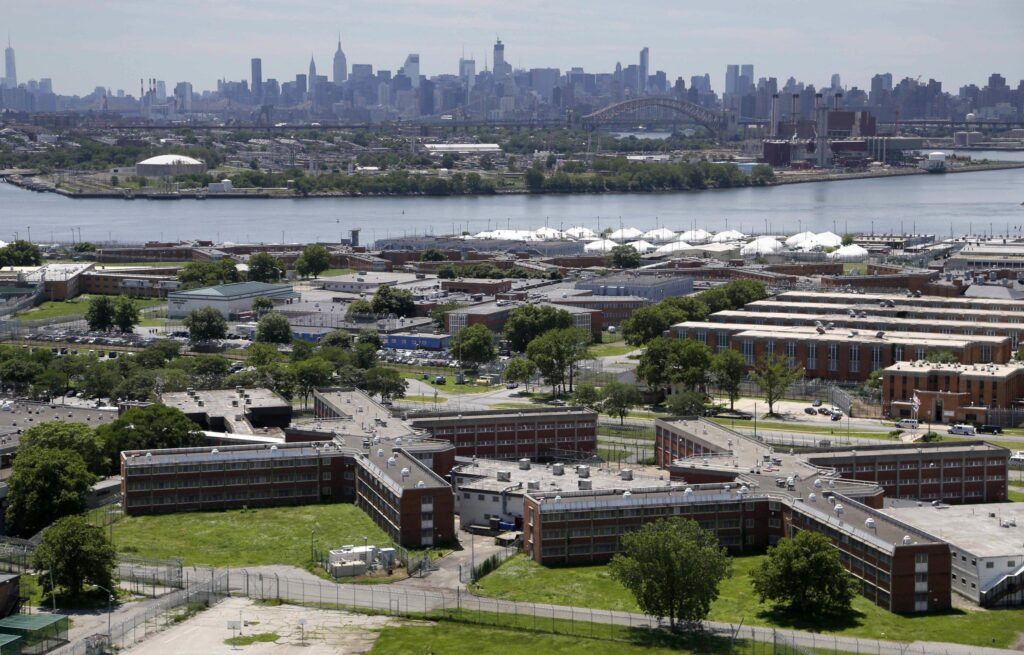Rikers Island, long emblematic of New York City’s struggles with mass incarceration and prison reform, has officially entered federal receivership—a historic move aimed at addressing decades of systemic failures. As the federal government assumes control over the troubled jail complex, questions now loom about the future of the facility, the impact on its inmates and staff, and the broader implications for criminal justice reform in the city. This article explores the challenges ahead and what lies in store for one of the nation’s most notorious correctional institutions.
Federal Receivership Signals Major Shift in Rikers Island Management
The appointment of a federal receiver marks a watershed moment for Rikers Island, a facility long plagued by systemic issues ranging from overcrowding to violence. This federal takeover is not just a change in leadership but a comprehensive intervention aimed at overhauling the jail’s deeply entrenched problems. Immediate priorities are expected to focus on enhancing inmate safety, improving healthcare services, and implementing accountability protocols to ensure transparency and progress.
Key areas targeted for reform under federal oversight include:
- Reduction of inmate population through alternative sentencing and bail reform initiatives.
- Staff training enhancements emphasizing de-escalation and mental health awareness.
- Infrastructure upgrades for safer, more humane living conditions.
- Data-driven performance metrics to monitor compliance and operational efficiency.
| Reform Area | Expected Impact | Timeline |
|---|---|---|
| Population Reduction | Decrease overcrowding, lower recidivism | 6-12 months |
| Staff Training | Improved inmate interactions, fewer incidents | 3-6 months |
| Infrastructure Upgrades | Enhanced living conditions, increased safety | 12-24 months |
Addressing Chronic Safety and Human Rights Concerns
The federal receivership marks a pivotal step toward rectifying the entrenched safety and human rights issues that have long plagued Rikers Island. Years of overcrowding, violence, and neglect have created a volatile environment, jeopardizing both inmate welfare and staff security. Experts emphasize that sustainable reform hinges on implementing strict oversight mechanisms, including enhanced transparency and independent monitoring, to hold facility administrators accountable. Without systemic change, past patterns of abuse and neglect are likely to persist, undermining public trust and violating constitutional protections.
Key reforms underway focus on:
- Improved Mental Health Services to reduce crisis incidents and support rehabilitation.
- Staff Training and Accountability programs designed to curb excessive use of force and foster respect for inmate rights.
- Infrastructure Upgrades aimed at alleviating overcrowding and creating safer living conditions.
A recent internal report highlights troubling statistics, underscoring the urgency of these efforts:
| Category | 2019 | 2023 |
|---|---|---|
| Inmate-on-Inmate Assaults | 1,450 | 1,265 |
| Use-of-Force Incidents | 980 | 900 |
| Suicides and Attempts | 15 | 12 |
While these figures show modest improvements, the data reveals that the facility remains far from safe or just. Moving forward demands an unwavering commitment to uphold human dignity and rights, positioning rehabilitation rather than punishment at the heart of Rikers Island’s future within the federal receivership framework.
Prioritizing Rehabilitation and Reducing Recidivism Through Innovative Programs
Transforming Rikers Island into a facility that fosters genuine rehabilitation requires a bold shift toward innovative programs tailored to address the root causes of criminal behavior. Emphasizing mental health services, educational opportunities, and vocational training helps equip inmates with the skills and support needed to successfully reintegrate into society. Such programs not only offer personal growth but also demonstrate a cost-effective approach to reducing repeat offenses, ultimately easing the burden on an already strained judicial system.
Key strategies gaining traction include:
- Therapeutic communities that focus on drug and alcohol addiction recovery
- Job placement partnerships with local businesses to provide post-release employment opportunities
- Technology-driven learning modules to make education accessible and engaging
- Restorative justice initiatives that encourage accountability and repair harm
Early data from pilot programs suggest promising declines in recidivism rates when these interventions are properly funded and administered. The success of these programs hinges on sustained investment and community collaboration—factors now under intense scrutiny as Rikers enters federal oversight.
| Program Type | Focus Area | Reported Reduction in Recidivism |
|---|---|---|
| Vocational Training | Employment Skills | 25% |
| Therapeutic Communities | Substance Abuse | 30% |
| Educational Programs | Literacy & GED | 20% |
| Restorative Justice | Accountability | 15% |
Building Community Trust and Ensuring Long-Term Transparency
Rebuilding public confidence in Rikers Island hinges on sustained openness and accountability throughout the facility’s transformation. Authorities must prioritize frequent, clear communication channels with community stakeholders, including residents, advocacy groups, and families of incarcerated individuals. Regular town hall meetings, transparent reporting of progress metrics, and accessible updates on policy changes are essential tools to foster a collaborative environment rather than one marked by mistrust. Without these mechanisms, federal receivership risks becoming another top-down intervention that alienates those most affected by the jail’s conditions.
To ensure transparency is ingrained in the facility’s operations over the long term, independent oversight structures should be institutionalized. A multi-party review board with representation from civil rights organizations, local government, and public health experts can guide policy adherence and operational reforms. Below is a proposed framework for oversight frequency and key transparency components:
| Oversight Activity | Frequency | Core Focus |
|---|---|---|
| Public Progress Reports | Monthly | Facility conditions, inmate welfare, policy updates |
| Stakeholder Town Halls | Quarterly | Community feedback, grievances, future plans |
| Independent Audits | Semiannual | Compliance with consent decrees and safety standards |
| Review Board Meetings | Monthly | Policy assessment, reform recommendations |
- Transparent data sharing to reveal successes and setbacks alike.
- Ongoing community engagement that empowers local voices.
- Clear accountability mechanisms that hold officials responsible for progress.
To Conclude
As Rikers Island transitions into federal receivership, the coming months will be critical in determining the future of one of the nation’s most notorious correctional facilities. With federal oversight promising greater accountability and reform, stakeholders remain cautiously hopeful that meaningful change can finally address decades of systemic issues. Yet, the complexities of transforming a deeply troubled institution ensure that challenges lie ahead. How effectively the new leadership can implement sustainable reforms will shape not only the lives of those incarcerated at Rikers but also broader conversations about justice and incarceration in New York City and beyond.













